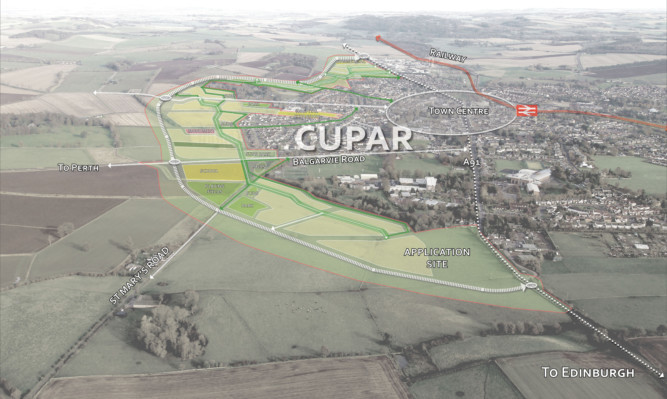Campaigners fighting plans for a massive housing expansion in Cupar North say there is now no need for the relief road that is a focal point of the proposals.
A consortium of developers hopes to build 1,480 homes, a primary school and business and retail parks to the north of the town, although opponents say it could kill the town centre.
The consortium has also promised to create a much-mooted bypass as part of the development, which they say will “feel like a continuation of the existing rural feel of the A91 as you approach Cupar”.
The housing and relief road have tended to go hand-in-hand in discussions about Cupar North over the last decade, but members of the Campaign Against Cupar North say there is no appetite for the former if the latter is no longer required.
“Ironically, if the proposal goes ahead, the infrastructure which was the original reason for the development will actually be under greater pressure as, apart from the bypass, all other minor roads in and around Cupar will have to carry increased levels of traffic, including the small villages of Rathillet, Dairsie and Balmullo, en route to Dundee,” a spokesperson for the campaign’s steering group said.
“Another major irony is that, with the bypass not coming to pass in the first decade of the 21st Century, Fife Council invested almost £2 million in improving the traffic flow in the town in 2013.
“This scheme has been very successful and one of Fife Council’s lead traffic experts last year stated that the scheme was assessed through to 2027 with an average growth factor of 12% during this period, which is derived from the National Road Traffic Growth Forecasts low growth factors.
“At the end of this period, the traffic was still flowing freely with nominal queues at peak periods.
“Put another way, there is now no need for a bypass, and because the bypass was going to be paid for by the housing development, there is no need for this.”
Campaigners have also argued that it could take several decades for the road to be fully completed if ever based on previous years’ house sales.
“The best evidence of average number of sales in Cupar, even in boom years, is 33 per annum,” the group added.
“On this figure Cupar North would take approximately 42.5 years taking us up to 2056 to sell, and complete the road.”
Opponents of the development also say the road “will do nothing to positively enhance the character of the town”, but developers insist that it will be “designed sympathetically” to match the existing character of roads in the area.
David Wardrop, planning consultant and spokesperson for the Cupar North Consortium, said: “We have submitted an application for planning permission in principle to Fife Council, which will consider all of the comments raised by stakeholders and local residents.
“The consultation period runs until February 29, following which we will review any valid issues which have been identified.
“We would actively encourage interested parties to view the application and comment on our proposals.”
